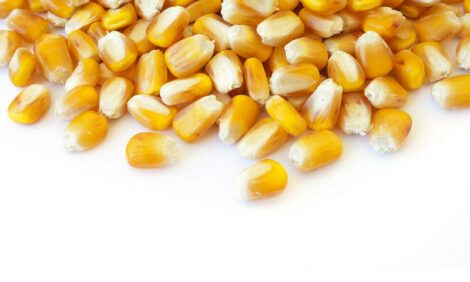



State of the Art PRRS Diagnostics: A Road Map for the Practical Application of Diagnostics to Determine Herd Current Status
Understanding the current status of a herd is paramount to the successful development and execution of a PRRS control program.Many terms are used to describe a herds PRRS status; terms like positive, negative, naïve, active, shedding, stable, non-clinical, etc. Although there are many terms, they are often not well defined, leading to a lack of clarity about the true status of a herd. It is important to adopt clear definitions and a common “language” among veterinarians and producers regarding herd status in order to facilitate communication working toward PRRS control in a herd as well as a collective industry. This paper will reference the definitions proposed and adopted by the American Association of Swine Veterinarians as outlined in the 2011 publication by Holtkamp et al. and discuss the practical application of PRRS diagnostics to determine a herds PRRS status.
PRRS diagnostics used for herd status determination
In general, diagnostic modalities used for PRRS fall into one of two types; antibody tests and antigen tests. This paper will focus on these two diagnostic types and the tests most widely applied by swine practitioners to determine current PRRS status. Antibody tests give information about exposure to PRRS virus. The enzyme-linked immunosorbent assay (ELISA) test is the most widely used antibody test for PRRS in the US. Positive test results point toward current and previous exposure to PRRS, or in young animals, maternally derived antibody from a dam previously exposed to the virus. This test however, does not give any information as to the time frame of the infection; meaning that a positive animal may have been infected last month or last year. To contrast, antigen tests allow us to detect actual PRRS viral antigen. Polymerase chain reaction (PCR) can be run on various sample types including serum, semen, blood swabs and oral fluids. PCR positive test results give an indication of the shedding of virus from an animal or population of animals. In other words antigen positive test results identify a population as a potential source of PRRS infection as positive animals are currently infected animals. To determine the current status of a herd, these 2 diagnostic types must be used in concert. The measure of exposure, ELISA, gives a broad historical overview of infection, while the measure of shedding, PCR, identifies the currently shedding animals or populations at the time of sampling.
4 Categories of herd classification
Applying these measures of exposure and shedding to herds gives us the following 4 categories:
- Positive unstable Positive Unstable is the default category for PRRS classification, meaning that herds with unknown shedding and exposure characteristics are automatically classified as positive unstable. This category includes herds with both confirmed exposure through positive ELISA results, as well as confirmed shedding with positive PCR results. This stage includes those herds that have very evident clinical signs of PRRS infection, as well as those herds that appear to be on the road to recovery clinically.
- Positive stable The word positive denotes a herd with evidence of exposure. The shedding status of the herd is uncertain. The word stable, in this case, not only indicates the clinical picture, but indicates that milestones have been met to document a period of time with no shedding; understanding that complete cessation of shedding may not be accurate. These herds must have 90 days of PCR negative test results when testing a minimum of 4 times, 30 days apart.
- Provisional negative This category only applies to breeding herds and is also a transitional category for herds late on the path to PRRS negative status. Herds in this category have no evidence of shedding, but still have older animals with ELISA positive results indicating historical exposure. Herds achieve this status when replacement animals remain ELISA negative 60 days post entry into the herd.
- Negative A negative herd status is easily defined as a herd without evidence of exposure or shedding. These herds have both PCR and ELISA negative animals throughout.
These categories are universally adopted in the US, but may be amended to also denote management practices, or interventions in place for PRRS control on a specific herd. Two common examples of this are “positive unstable – modified live virus vaccinated” and “positive stable – undergoing elimination.” These amendments give veterinarians and producers not only the classification, but an idea about the plan in place to achieve PRRS control in the herd. These categories apply to all breeding herds. Off-site growing pig herds in 2 or 3 site production are simply categorized as positive (shedding and/ or exposure positive) or negative (shedding and exposure negative where exposure does not include evidence of maternally derived immunity to PRRS).
The Roadmap: Using “diagnostic gates” in a holistic approach to determine herd status A practical and systematic approach to determining current status in a farrow to finish herd must take into account the categories above, as well as knowledge of the infection chain.
Practically we understand that if there is PRRS shedding (PCR positives) up-stream in a herd that down-stream populations are likely to be, or soon become, exposed and potentially shed. With that concept in hand, I propose the concept of “diagnostic gates” at different points in the infection chain to understand the upper most point where PRRS infection is detectable.
The diagnostic gates are: Semen Source Gilt replacements Piglets at birth Piglets at weaning Growing pigs
Conclusions and Recommendations
An appropriate diagnostic plan to assess both shedding and exposure is required to accurately determine the current status of a herd. This is a critical step as it defines the starting point on the PRRS control journey.
Erin J Lowe
If you want to read more abstracts like this one visit: https://www.prrs.com/en/publications/abstracts/









